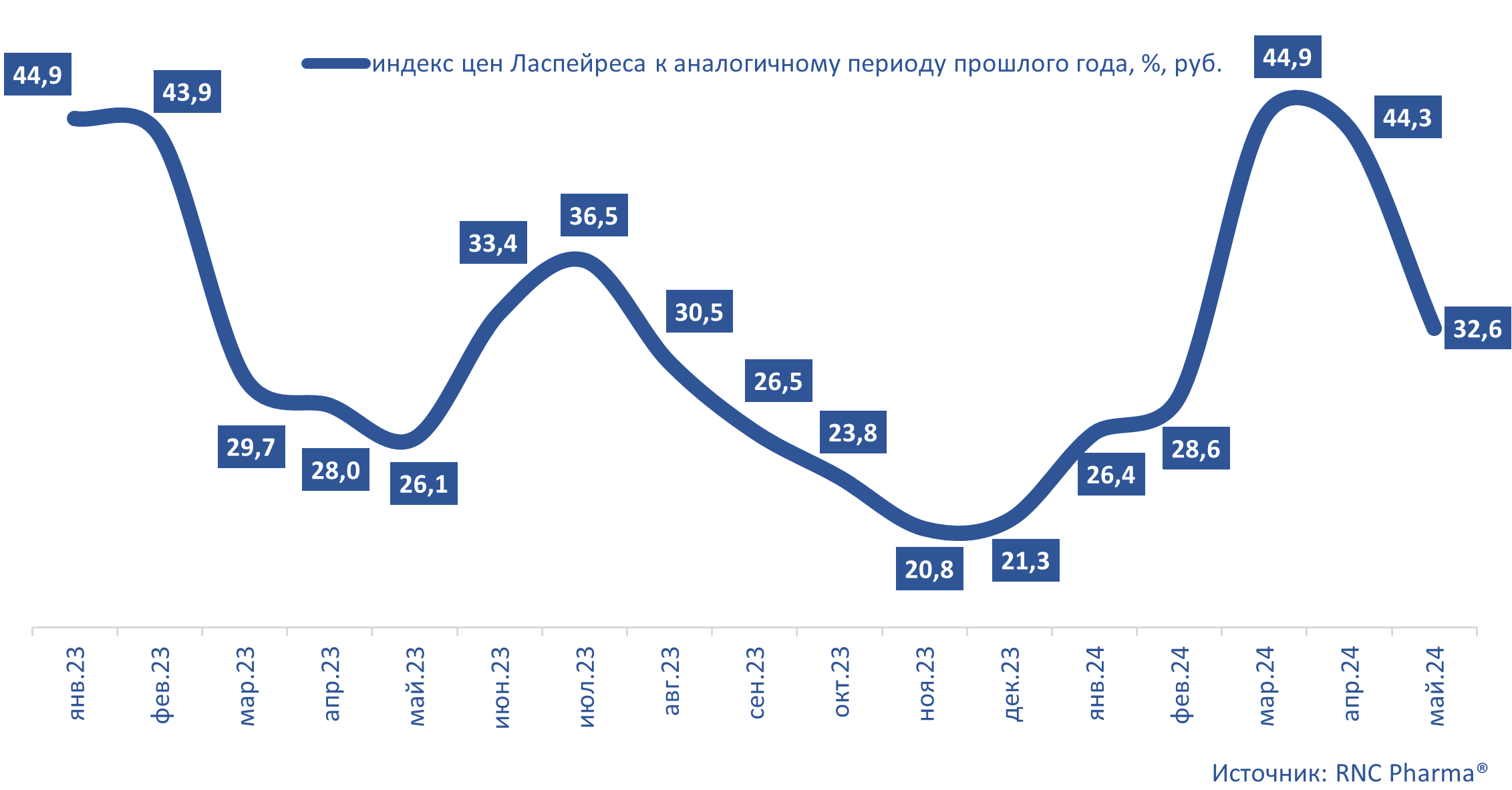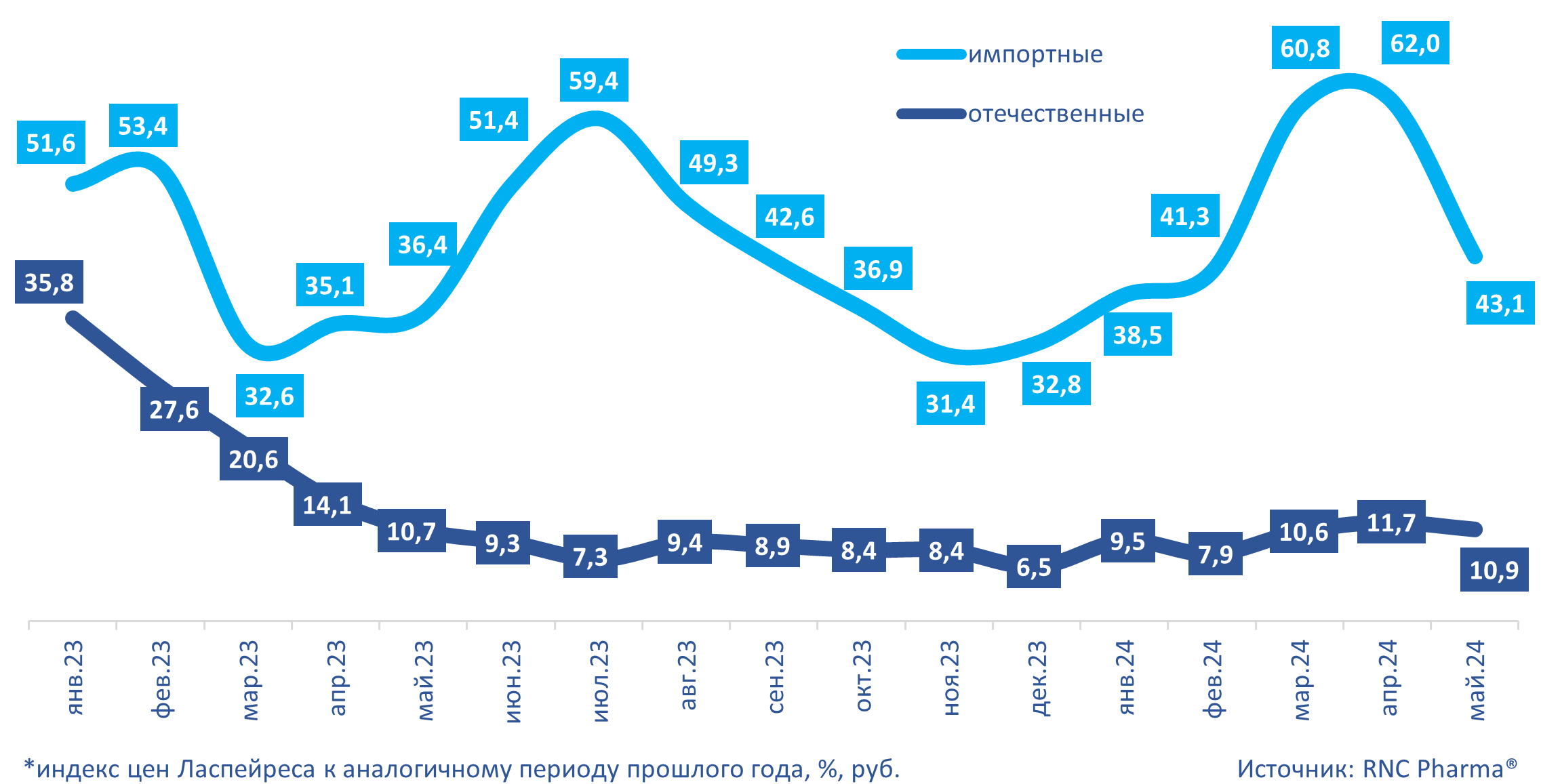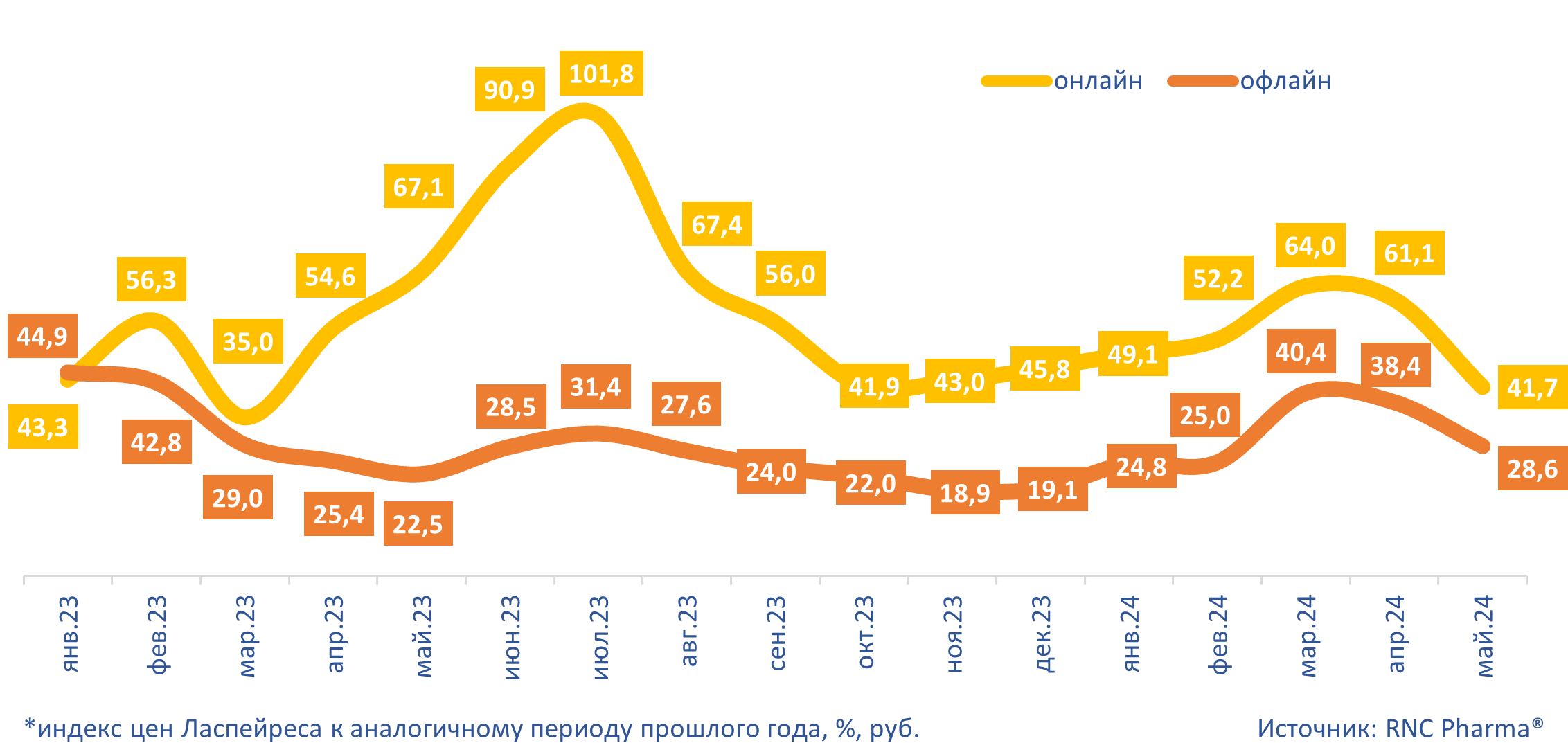Inflation Rates in the Russian Veterinary Retail Market (May 2024)
In 2023, veterinary drugs on the Russian retail market (e-com included) went up in price 26.6% from 2022. The fastest price growth rates were seen in early 2023 (Fig. 1); as a result of the devaluation of the ruble and the subsequent correction of prices for imported goods on the Russian market, inflation surged in June–August 2023. By the end of the year, the prices had stabilized, dropping to a year-low. An upward trend began in January 2024 with 26.4%, peaking in March 2024 with 44.9%. In April 2024, however, the inflation rate started to go down, reaching 32.6% in May 2024. In January–May 2024, the price index was 35.4%.
Fig. 1. Inflation rates in the veterinary retail market in January 2023–May 2024

The price indices for imported and Russian-made drugs differed significantly; the average price for foreign products in 2023 grew 36.6% from 2022, while that for Russian-made goods went up by only 11.6% (Fig. 2). The prices for foreign products went up in the spring and summer; the prices peaked in July at 59.4%. At the same time, the price indices for imported goods determined the growth rates in the whole market and were heavily influenced by the situation in the foreign exchange market, especially when parallel imports were involved. April 2024 saw the highest inflation rate since January 2023, 62%. In May 2024, however, the inflation rate dropped to 43.1%. In January–May 2024, the prices for imported veterinary drugs went up 46.8%.
The inflation rate for Russian-made drugs in 2023 had a clear downward trend. It peaked in January 2023 at 35.8%, reaching a comfortable 10.7% in May 2023 before dropping to its lowest in December 2023 (6.5%). In January 2024, however, the prices started to grow—the inflation rate was 9.5%—before falling to 7.9% in February 2024 and then growing again to 11.7% in April 2024 and 10.9% in May 2024. In January–May 2024, the prices for Russian-made veterinary drugs went up 8.6%.
Fig. 2. Inflation rates* in the veterinary retail market in January 2023–May 2024, % (imported / Russian-made)

The inflation rate differed greatly from segment to segment in 2023 (Fig. 3). The online prices went up 45% against 23% in the offline segment.
The inflation rate in the offline market was higher than that in the online segment only once, at 44.9% in January 2023. After that, the inflation rate went down, reaching its lowest at 18.9% in November 2023. In December 2023, it went up once again, to 19.1%, and the upward trend continued—the price index was 40.4% in March 2024. In April 2024, the inflation rate slightly decreased, reaching 61.1% in the online market and 38.4% in the offline segment. In May 2024, the prices continued to fall, with 41.7% in e-com and 28.6% in the offline channel. In January–May 2024, the prices went up 32.2% in the offline market and 52.6% in e-com.
Fig. 3. Inflation rates* in the veterinary retail market in January 2023–April 2024, % (online / offline)

 Рус
Рус




